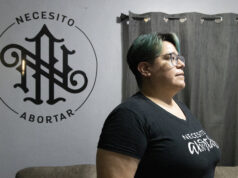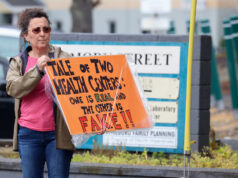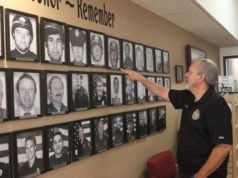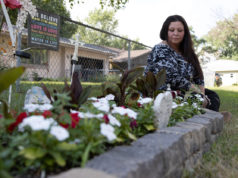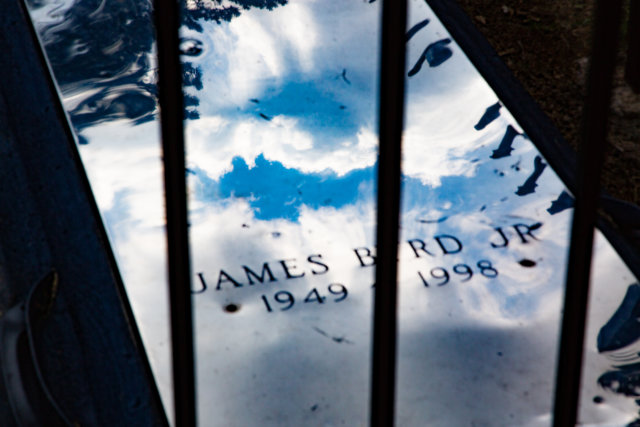

By Lillianna Byington, Brittany Brown and Andrew Capps | News 21
JASPER, Texas — Former Texas prosecutor Guy James Gray keeps a 20-year-old CD in his desk that documents with graphic photos one of the most vicious hate crimes in history – the day James Byrd Jr. was beaten, stripped naked, tied to the back of a truck by three men from the Ku Klux Klan and dragged down a dirt road until he was dead and decapitated.
“When you handle a case like that and get inside the mind of a real racist, a white supremacist racist, and you see how dangerous those people are to the fabric of our society, you just become more sensitive to racial issues,” Gray said.
In 2009, Byrd became one of the namesakes for The Matthew Shepard and James Byrd Jr. Hate Crimes Prevention Act, a federal law expanding hate crime legislation to include crimes motivated by gender, sexual orientation, gender identity and disability.
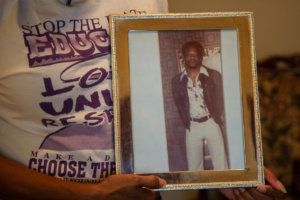
But just 100 hate crimes have been pursued by federal prosecutors nationwide between January 2010 and July 2018, according to a News21 analysis of court documents. Half of those cases involved racially motivated violence against black Americans, more than any other group.
The numbers do not include hundreds of other cases prosecuted in local and state courts. No single agency tracks those arrests or cases, although incidents are supposed to be reported to the FBI by state and local police. Since 1995, black Americans have been the victims of 66 percent of all racially motivated hate crimes, according to FBI data collected from local law enforcement agencies.
“You still see it all over, in all the cities and in the rural places, it’s still with us,” said Gray, who is now an attorney in Kerrville, Texas.
While black Americans have long been targets of hate, advocacy groups and victims told News21 the 2016 presidential campaign and the election of President Donald Trump may have encouraged more people to express their intolerance toward black Americans.
“When this president campaigned, it was a campaign of division and bigotry,” said Richard Rose, president of the Atlanta branch of the NAACP. “And so, those people who believe in discrimination of any kind gravitated to that campaign. After the election, they feel emboldened to act out these statements that have racial overtones in them.”
Christina Crowder was driving down the interstate in Houston with her two biracial daughters in the backseat last year when a car pulled up next to her and the driver opened his windows. He started shouting phrases like “go back to (expletive) Africa” and “Trump should build a wall for you n****rs,” then began to swerve toward her, she said.
“I’ve been living in Houston for my whole life and I hadn’t experienced things like that,” Crowder said. “There are different looks that even my children get since Trump became president.”
From the historically unwelcoming American South to cities across America, federal hate crimes against black Americans in recent years have ranged from brutal beatings and violent killings to burning churches, firebombing homes and outspoken threats of harm.
“It has always been that way,” said Booker T. Hunter, 89, the founder and president of the NAACP in Jasper, Texas, for the past 40 years. “The history of (Byrd’s) death, people never, never gonna forget about it. We really haven’t healed from that since. It’s still going on.”
Targeted in most violent crimes
For those 50 federal hate crimes targeting black Americans, News21 reviewed hundreds of court documents and indictments to determine just how often perpetrators were prosecuted under federal hate crimes statutes. Many perpetrators had affiliations with white supremacist groups or invoked “white power” during acts of violence and verbal harassment.
During a Bible study meeting at Emanuel African Methodist Episcopal Church in Charleston, South Carolina, three years ago, a young white supremacist shot and killed nine black parishioners. Dylann Roof was convicted on 33 federal hate crime charges and sentenced to death for the attack.
In Dubuque, Iowa, that same year, charges were brought against a white man with a swastika tattoo who assaulted a black American man and repeatedly kicked and jumped on his head until he was unconscious, according to federal court records.
In June 2011, a group of white teenagers drove around Jackson, Mississippi, harassing black Americans. They found 48-year-old James Craig Anderson in a motel parking lot and attacked him, shouting “white power.”
Security footage shows that when Anderson tried to stand up after the attack, they ran him over with a pickup truck and killed him. Three were convicted of one count of conspiracy and one count of violating the Shepard-Byrd Act.
State Sen. Barbara Blackmon, a Democrat from Mississippi, said Anderson’s killing made her “wonder just how far we’ve come.”
“I am aware of that James Byrd incident, and each time something like that occurs, whether it’s in Mississippi or in any place across this country, if you are a student of history, if you have any kind of conscience, then those kinds of horrific things should make you feel very uncomfortable,” Blackmon said.
Intolerance against black Americans has existed since they were forced into slavery, targeted for racial lynchings and denied equal rights. Despite the passage of hate crime legislation and civil rights protections, black Americans disproportionately face acts of intimidation, extremist rhetoric and life-threatening violence.
She said the country has “not yet overcome that history.”
Reliving history of hate
In early 2016, Jordan Williams found the N-word written twice in black permanent marker on the wall outside his apartment in Denton, Texas.
“My parents experienced this in the ‘60s and ‘70s, and we talked about how we could be judged for the color of our skin,” he said. “All these years later, they took it really hard to hear what happened to me. I don’t think they expected it to happen to me.”
According to available data from the FBI, black Americans are targeted in hate crimes more than any other group. Still, only about 2 percent of total hate crimes are reported to the bureau, according to the NAACP. That means no one really knows how many times black Americans have been victims of hate.
“Even the data that we have can be misleading, and it’s useful for seeing trends maybe from year to year, assuming that nothing changes in terms of our reporting and how we report,” said Kevin Buckler, a criminal justice professor at the University of Houston. “But I don’t know if it’s a true indication of the number of criminal events that are motivated by hatred.”
Dena Marks, the senior associate director for The Southwest Regional office of the Anti-Defamation League, said political tensions in America are prompting people to publicly act on or express their hate and biases. She said she has seen an increase in hate crime victims and incidents at the ADL in Houston.
“Hate is always there under the surface, but sometimes people hate more openly,” Marks said. “We still have a long, long way to go. Since the Civil Rights movement, I think we’ve come a little ways since then because of laws, but I don’t think as people we’re much farther along.”
A 2018 report by the Center for the Study of Hate and Extremism at California State University, San Bernardino, found that hate crimes reported to police in the 10-largest cities in America increased by 12.5 percent in 2017, marking the fourth-consecutive annual rise and the highest spike in more than a decade. In 2017, anti-black crimes were among the most common in the nation’s 10-largest cities, according to the study.
On a June morning this year, Debra Davis, a black woman in Clio, Michigan, and her ex-husband woke up to find racial slurs spray-painted on her family’s 2011 Chevrolet Silverado, including the N-word and “white power.”
“I don’t think that the people that perpetuate crimes against black people has changed,” Davis said. “The only thing that’s changed is you have a person in the White House that accepts you saying that’s how you feel.”
U.S. Attorney General Jeff Sessions has said Trump’s administration and the Justice Department are “committed to reducing violent crime and making America safe.”
“As you know, hate crimes are violent crimes. No person should have to fear being violently attacked because of who they are and what they believe, or how they worship,” Sessions said at last year’s Hate Crimes Summit in Washington, D.C. “So I pledge to you: As long as I am Attorney General, the Department of Justice will continue to protect the civil rights of all Americans – and we will not tolerate targeting of any community in our country.”
Since 1995, black Americans have been targeted in 34.6 percent of all hate crimes reported to the FBI, despite making up only about 13.2 percent of the country’s population. Furthermore, only about 12 percent of the nation’s police departments reported any hate crimes to the FBI in 2015 and 2016.
A News21 analysis of the hate crimes reported to the FBI from 2012 to 2016 determined that, on average, 16.6 million black Americans, or 39.5 percent of the country’s black population, lived in a county that reported no anti-black hate crimes in a given year.
Many victims told News21 that authorities were skeptical of their claims, and they needed to record hateful incidents for police to believe them and prosecutors to pursue hate crime charges.
Geoffrey Preudhomme, a student at Radford University in Virginia, spent an hour cowering behind his bedroom door in February, while his roommate repeatedly shouted the N-word, banged on his door and threatened to slit his throat. He said people wouldn’t have believed him if he hadn’t filmed the incident.
“In today’s America, you have to be ready to film and document it, it’s not just with brutality but in order to change the system we have to expose all versions of racism,” he said. “I was threatened for the first time in my life in a place where I live, home – where you are supposed to feel the safest.”
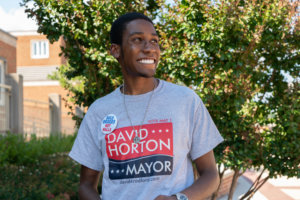
Radford University released a statement condemning the language used in the video and investigated the case, but Preudhomme’s roommate was allowed to remain a student.
“Every election cycle there is an increase in intolerance and racial hatred,” said Steve Spreitzer, CEO of the Michigan Roundtable for Diversity and Inclusion. “This last presidential election cycle it seemed to be at a higher level. But the difference is, it’s not stopped. Even though this person got elected, they are still speaking hate with great hatred and inspiring people to be hateful.”
At the national NAACP conference in July, Leon W. Russell, chairman of the NAACP Board of Directors, said xenophobia (the fear of others) has surged in the past two years.
“White supremacy is being espoused by people who have served and are serving in some of the most important positions in the nation and once again,” Russell said, “the White House has become a sanctuary for vile thoughts, hate and fear. Ominously, we seem to be facing the gloom of the dark days we thought were past.”
In July 2015, about 15 members of a group called Respect the Flag went on a two-day joy ride across Paulding and Douglas Counties in Georgia with a handful of pickup trucks decked out with Confederate flags.
On that day, Melissa Alford happened to be hosting an outdoor party for her 6-year-old grandson. When the group showed up shouting threats and racist slurs while pointing a loaded shotgun at the crowd, she said she could only focus on getting the kids safely inside.
“When I seen that shotgun, all I could do is yell in the yard, ‘Get the kids! Get the kids!’ Because we had a bouncy house full of kids,” she added. “When I said that, one of the guys yelled, ’We will shoot them kids too.’”
Georgia doesn’t have a state hate crime law, but two members of Respect the Flag received increased sentences when they were convicted of an additional charge of “participation in criminal street gang activity” after two others agreed to testify for the prosecution as part of their plea agreements.
“Their actions were motivated by racial prejudice, which in its view, in the view of the Court, aggravates their punishment,” Judge William McClain said during the pair’s sentencing.
Despite Georgia’s lack of hate crime legislation, McClain said, “It’s prudent for the court to consider the motivation of persons when committing a crime when they’re convicted and face sentence.”
Historically targeted by hate groups
Racial intolerance against black Americans has persisted for decades. Burning crosses and public lynchings were common practice by the KKK, and the organization has been using these tactics and more to intimidate black Americans for over a century.
The Southern Poverty Law Center, an advocacy group that tracks hate and bigotry toward marginalized communities, has documented 72 known KKK active chapters in major cities across the country. The KKK has seen a decline in overall membership, according to the SPLC. The number of KKK chapters dropped from 130 to 72 last year.
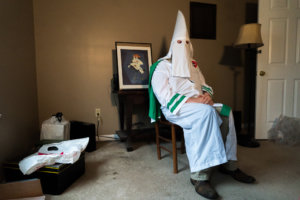
According to an original Klan oath from 1995 obtained by News21, KKK members pledge their allegiance to “the Aryan Race” and sign an oath swearing “… to the enemies of my race and my nation no matter how high and powerful” that they “pledge swift and merciless justice when in the fullness of the day of reckoning shall arrive.”
Thomas Pou, the current imperial wizard of the “Original Knights of America, Knights of the Ku Klux Klan,” insists the Klan is not rooted in hate. He said the KKK has an unfair negative connotation and many crimes have been attributed to Klansmen who weren’t members of the Klan.
“If you join the Klan because you hate anyone whether it’s blacks, Hispanics, Jews, Orientals, even homosexuals or race mixers, you’re joining for the wrong reasons,” said Pou, who wears his Klan cloak whenever publicly discussing the group to hide his identity. “Hatred does nothing. We’re not in it to hate anybody. We’re in it to look after our own.”
The Anti-Defamation League’s Center on Extremism found white supremacists and far-right extremists accounted for 59 percent of all hate and extremist-related fatalities in 2017, an increase of 20 percent from 2016, according to an ADL report released this year.
Pou, 57, has been a member of the Klan nearly all his life; he joined in the late 1970s when he saw a classified advertisement for the group in a magazine. Pou’s account of the KKK is contradicted by reports of racially motivated crimes, including Byrd’s case, in which the murderers were reported to be Klansmen.
Daryl Davis, a well-known blues musician, said he regularly engages in relationships with KKK members, hoping to convince them to look at black people in a different light. He said he wanted to understand people who thought “their skin color gave them superiority over someone else.”
He said more than 200 KKK members have given up their robes after his conversations pushed them to rethink their life-long ideology. Davis has collected about 45 KKK robes and said many question why he keeps them.
“It is history,” Davis said. “The good, the bad, the ugly, the shameful, it’s all American history, and we don’t destroy history, we try to learn from it.”
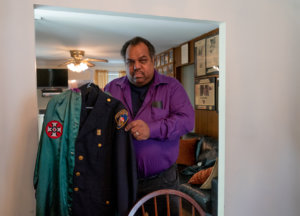
Hate groups have rebranded in recent years to appeal to a younger audience by creating a stronger online presence and limiting the use of controversial extremist symbolism, according to a report from the SPLC.
One group committed to that rebranding is the National Socialist Movement (NSM). Headquartered in Detroit, it is one of the largest and most prominent neo-Nazi groups in the country, led by its commander, Jeff Schoep.
Schoep said the white race is dying and needs to be preserved. He compared it to the endangered whale population, and likened his efforts to those of environmental activists working to protect the whale species.
“Any time whites say they want something for white people and standing up for white interests, no matter how watered down it is or how radical it is … it’s always called hate. It’s always called bigotry or racism,” Schoep said.
The movement has held rallies across the nation to protest ideas that challenge that ethnostate, including immigration, hiring quotas and miscegenation.
“I am not motivated by hate on this or anything I do with the organization. I love my country and my people. Hate group, hate crime, those are often buzzwords that are used to get people to have a knee-jerk reaction to disliking us, that is essentially what that is,” said Harry Hughes, the public relations director for the NSM.
At the 2017 Unite the Right rally in Charlottesville, Virginia, leaders in both the KKK and the NSM delivered speeches evoking chants of “White Lives Matter” and “Go the (expletive) back to Africa.” The rally later turned violent and Heather Heyer, a 32-year-old counter protester, was struck and killed by a white nationalist who deliberately drove his car into a crowd of counter-protesters.
“We think it is definitely linked to a lot of the rhetoric that we’re seeing coming from the White House and throughout the campaign disparaging minorities and people from minority countries,” said Kofi Annan, the president of the Fairfax County, Virginia chapter of the NAACP. “It’s really been feeding into a lot of the hatred that people feel it is now OK for them to repeat and act on, and we see that manifest itself in Charlottesville and in schools and with our kids.”
Byrd’s sister: ‘We have a long way to go’
It’s been 20 years since James Byrd Jr.’s death, but people in Jasper told News21 that not much has changed. His grave now is protected by an iron fence because it’s been desecrated twice. Byrd’s sister and the president of the Byrd Foundation for Racial Healing, Louvon Harris, now 60, said people need to remember what happened.
“When I was going to school, in history I heard about the lynching and things like that, but I never thought I would live one in reality of 1998,” Harris said.
Billy Rowles was the sheriff in Jasper when Byrd’s dismembered body was found on Huff Creek Road. He said he saw a trail of what looked like burnt rubber.
“Once we got to look and you realize that it wasn’t rubber that was in the road,” he said. “It was flesh and blood and a part of a human being, that this long trail that we followed for a couple miles was actually part of a human being.”
The body was Byrd’s. Stripped of his clothes and chained by his ankles to the bumper of the pickup truck, Byrd’s skin was burned off his body as he was dragged three miles down the dirt road.
The men, who were members of the Ku Klux Klan, dragged him until his body split apart and dumped his severed torso in front of a black American cemetery, returned home and washed the truck.
Three men were convicted in the murder of Byrd. Lawrence Russell Brewer was executed in 2011, the first time in Texas a white person had been executed for killing a black man. John William King is now on death row, and the third man, Shawn Allen Berry, was sentenced to life in prison. Berry was driving the truck that dragged Byrd.
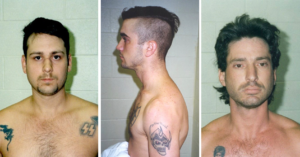
“The real problem was getting an all-white jury to convict a white man for killing a black man in east Texas,” said prosecutor Gray. “I made a mistake. I let one guy get on the jury that I should have cut and that one guy was the reason he (Berry) got life instead of the death penalty.”
When the jury went off to deliberate, Gray said he overheard that juror say, “what’s all the ruckus, it’s just a crackhead (N-word).” Berry will be eligible for parole in 20 years.
“You have a freedom to speak your peace, but you don’t have the freedom to kill because people don’t agree with what you’re speaking of,” Byrd’s sister said. “America is divided now, we have a long way to go.”
(Editor’s note: News21 reporters Brooks Hepp, Megan Ross, Lenny Martinez Dominguez and Justin Parham contributed to this article. Brooks Hepp is a Myrta J. Pulliam Fellow, Megan Ross is an Ethics and Excellence Fellow and Justin Parham is a Donald W. Reynolds Fellow.)
(Publisher’s note: This story was reported in partnership with ProPublica’s Documenting Hate Project, which has collected reports about hate crimes and bias incidents.)









